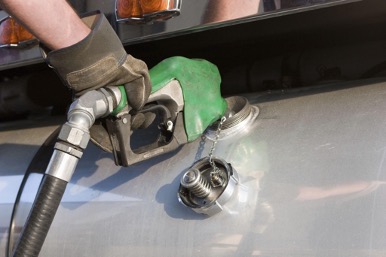
As I write this, the average cost of diesel fuel is $3.848 per gallon. If a driver could save one gallon of fuel a day, and run five days a week (260 days a year), it would save the owner of the truck $1,000.48 over the course of the year. Of course, the savings would fluctuate depending on the cost of fuel, but savings is savings.
Roughly four dollars a day may not seem like much, but over the course of the year, it adds up to real savings. It could be a truck payment, a fill-up or two of fuel, or whatever you feel like using it for. $1,000.48 is not an insignificant amount of money. This is why companies incentivize reducing idle and increasing fuel economy. Here are a few ways that can help you save that gallon of fuel, or maybe more.
Shut The Truck Off
This may seem like a “no brainer”, but it seems often trucks are left idling while drivers are inside a customer checking in, fueling up, inside a truck stop paying for fuel, or even just sitting in a parking lot on a nice day, when the weather is fine. While there may be a reason for this, it’s easy to just shut the truck off. Since an idling truck burns approximately a gallon of fuel an hour, simply shutting the truck off while not in it, or while fueling could add up to an hour very quickly. Even on a 10-hour break, shutting the truck off for one of those hours could easily save that gallon.
Back off Going Up-Hill
Slowing down going uphill stinks. Unfortunately, gravity and physics are pretty much in charge of things, and we just try to power through it. Planting our foot on the floor is the easy thing to do, but it’s just throwing fuel out of the exhaust pipe. As you push down on the pedal, you‘ll reach a point where the added fuel is not helping you get up the hill any faster. At this point, letting up on the pedal just a little can help save on fuel. Don’t be afraid to lose a little momentum. If you have the DT12 AMT Integrated Powertrain Management (IPM), or something similar, take advantage of it. Learn how to use it to your advantage. These programs are designed to help save fuel, and they work.
Let Off Going Down-Hill
Just like giving too much fuel going uphill, you can use too much fuel going downhill. Here, gravity is your friend. Let physics take control when it’s safe to do so. Remember, you can go down a hill too slow thousands of times, but you will only go down a hill too fast once. Using gravity to help you regain momentum is free. Adding fuel is just a waste.
Stay Out Of The Pack
Besides the safety factor, staying out of the pack reduces the need to brake, which then reduces the need to accelerate to regain that lost momentum. Any time you need to regain lost speed you’re using fuel. Staying out of the pack allows you to maintain an even speed, which improves fuel economy. Better fuel economy = Less Fuel = Savings.
When Possible, Slow Down
You don’t even need to slow down much. One mile an hour can save significant fuel over the course of the day, and won’t hurt productivity that much. It also helps with staying out of the pack situation.
You Don’t Have to Do Them All, All The Time
The nice thing about these tips is that you can do them as you have the ability. These are just tiny little things that added together can bring significant savings. Remember, we are only talking about one gallon a day. Just imagine if you could save two or three!